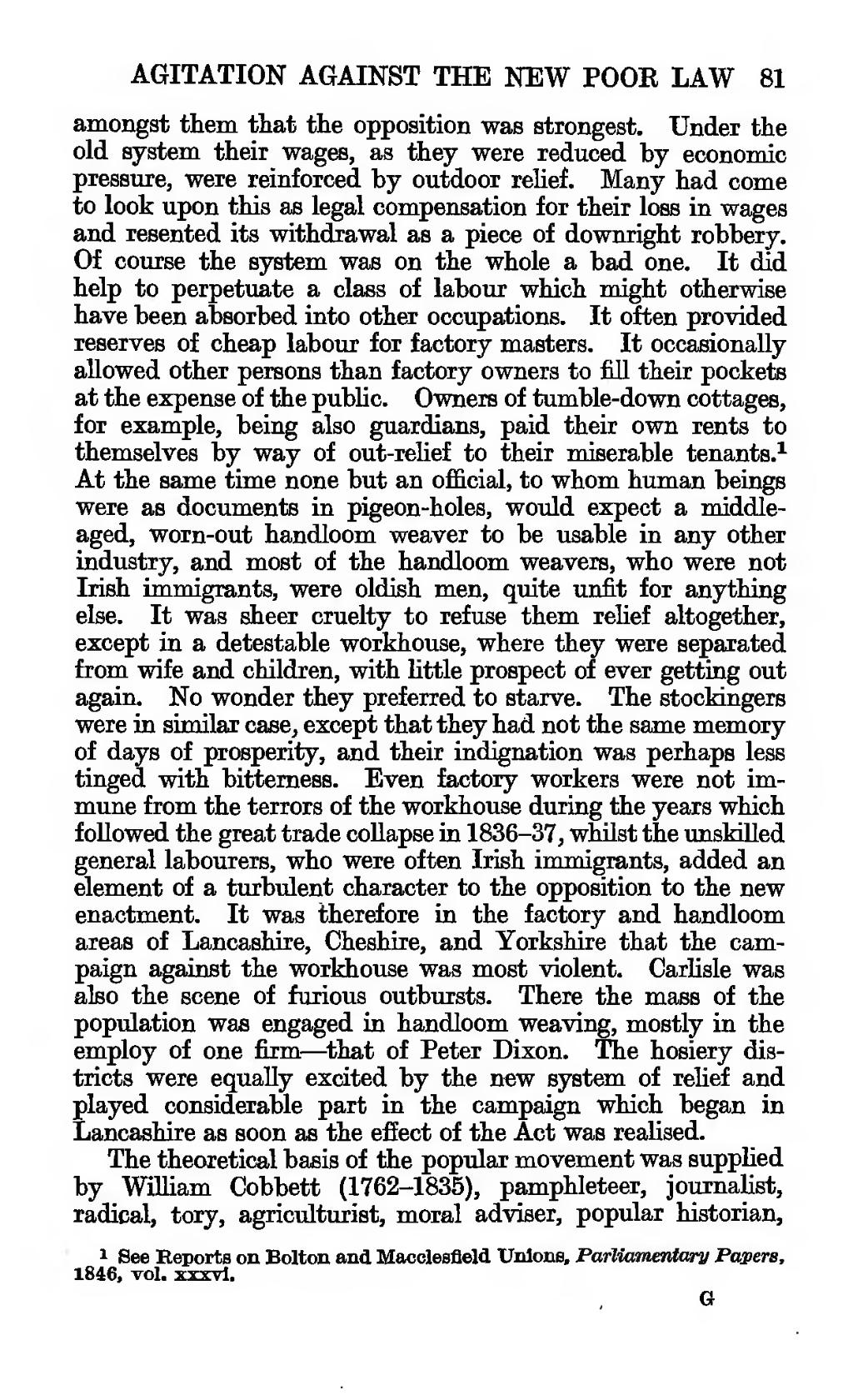amongst them that the opposition was strongest. Under the old system their wages, as they were reduced by economic pressure, were reinforced by outdoor relief. Many had come to look upon this as legal compensation for their loss in wages and resented its withdrawal as a piece of downright robbery. Of course the system was on the whole a bad one. It did help to perpetuate a class of labour which might otherwise have been absorbed into other occupations. It often provided reserves of cheap labour for factory masters. It occasionally allowed other persons than factory owners to fill their pockets at the expense of the public. Owners of tumble-down cottages, for example, being also guardians, paid their own rents to themselves by way of out-relief to their miserable tenants.[1] At the same time none but an official, to whom human beings were as documents in pigeon-holes, would expect a middle-aged, worn-out handloom weaver to be usable in any other industry, and most of the handloom weavers, who were not Irish immigrants, were oldish men, quite unfit for anything else. It was sheer cruelty to refuse them relief altogether, except in a detestable workhouse, where they were separated from wife and children, with little prospect of ever getting out again. No wonder they preferred to starve. The stockingers were in similar case, except that they had not the same memory of days of prosperity, and their indignation was perhaps less tinged with bitterness. Even factory workers were not immune from the terrors of the workhouse during the years which followed the great trade collapse in 1836–37, whilst the unskilled general labourers, who were often Irish immigrants, added an element of a turbulent character to the opposition to the new enactment. It was therefore in the factory and handloom areas of Lancashire, Cheshire, and Yorkshire that the campaign against the workhouse was most violent. Carlisle was also the scene of furious outbursts. There the mass of the population was engaged in handloom weaving, mostly in the employ of one firm—that of Peter Dixon. The hosiery districts were equally excited by the new system of relief and played considerable part in the campaign which began in Lancashire as soon as the effect of the Act was realised.
The theoretical basis of the popular movement was supplied by William Cobbett (1762–1835), pamphleteer, journalist, radical, tory, agriculturist, moral adviser, popular historian,
- ↑ See Reports on Bolton and Macclesfield Unions, Parliamentary Papers, 1846, vol. xxxvi.
